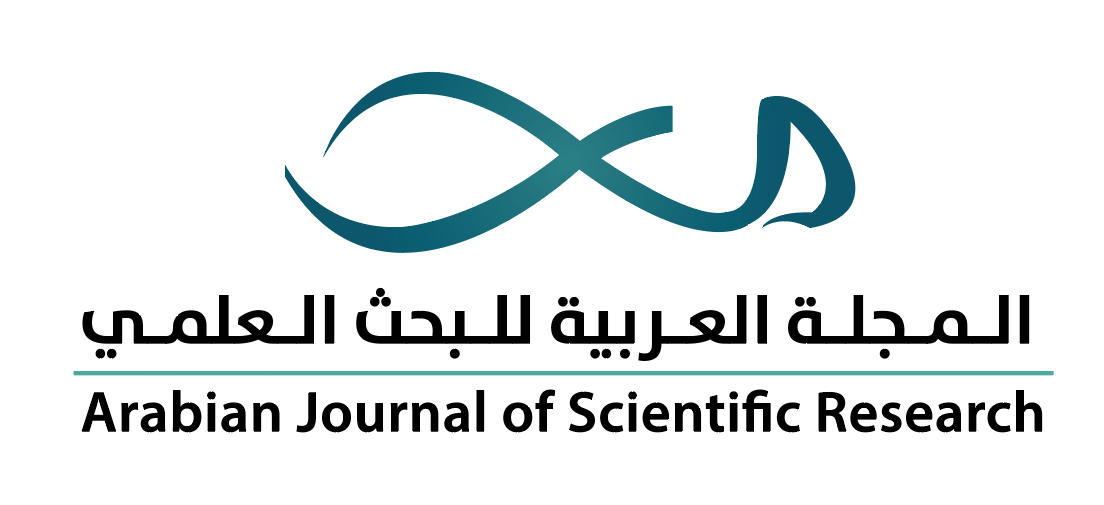-
oa المواد النانومترية المتقدمة لمعالجة المياه: أبعاد بيئية
- Source: Arabian Journal of Scientific Research-المجلة العربية للبحث العلمي, Volume 4(2023), Issue 2, Oct 2023,
-
- 28 March 2023
- 27 July 2023
- 31 October 2023
Abstract
الملخص
باتت حاجة البشرية ملحةً في الحصول على مصادر جديدة للمياه؛ للتغلب على مشكلة ندرة المياه التي تواجه معظم دول العالم. ويقوم الباحثون بدور فعّال في تلك الحلول عبر تقنيات تحلية مياه البحر ومعالجة وإعادة استخدام مياه الصرف الصحي والصناعي والحصول على المياه من الهواء المشبع بالبخار وغيرها. وتقنية معالجة مياه الصرف تعد من أسهل الحلول وأقلها تكلفة؛ لسهولة تنفيذها، وأنها يمكن أن تنتج كميات كبيرة من المياه المعالجة والصالحة للاستخدام. ومن بين التقنيات الأكثر استخداماً في علاج مياه الصرف الامتزاز (امتزاز المواد الضارة الموجودة في مياه الصرف على سطح مواد نانومترية حديثة وفعالة)؛ حيث إن عملية الامتزاز تعتمد بشكل أساسي على المساحة السطحية للمواد المازة ووجود مجموعات وظيفية على سطحها تسهّل من ترابط جزيئات المادة الممتزة؛ لذا فالمواد النانومترية الحديثة لها دور فعال وحيوي في هذه العملية. ومن أهم هذه المواد أكسيد الجرافين الذي له مساحة سطحية عالية جدّاً والذي تم تحضيره في شكل مسامي من خلال طريقة التجميد الجاف. وأظهرت التحاليل أن أكسيد الجرافين عبارة عن رقائق بها مساحة سطح عالية وكثافة عالية من المجموعات الأكسجينية على الحواف. وتوفر هذه العملية المزيد من مواقع الامتزاز والمراكز النشطة لامتزاز أيونات المعادن الثقيلة (الحديد وغيره). وقد أثبت أكسيد الجرافين قدرته على إزالة أيونات الحديد مما يجعله مادة جيدة لإزالة أيونات المعادن الثقيلة في معالجة المياه. أيضاً المواد النانوية الأخرى مثل أكسيد الكوبالت الموزع في مصفوفة من السيليكا أظهر قدرة عالية على إزالة صبغة أزرق المثيلين من مياه الصرف الصناعي. وأثبتت كذلك مواد كربونية منشطة من مخلفات زراعية قدرتها على إزالة كبريتيد الهيدروجين من المياه البترولية. كما تم دراسة مواد الكربون النانوي متعدد الجدار والمطعم بمادة أكسيد الحديد المغناطيسي لإزالة أيونات الزئبق من المياه. وقد أثبتت الدراسات أن للمواد النانومترية الحديثة قدرة عالية على إزالة الملوثات (صبغات وأيونات معادن) من المياه؛ ومن ثم يمكن إعادة استخدام المياه في أغراض شتى، منها الزراعة.
With water scarcity rising as a global issue, finding solutions for new sources of water has become a pressing need. Researchers are playing an active role in finding such solutions like seawater desalination techniques, treatment and reuse of sewage and industrial wastewater, obtaining water from steamy air, and other techniques. Wastewater treatment technology is considered as one of the easiest and least expensive solutions due to its ease of implementation and its capability of producing large quantities of treated water suitable for usage. One of the techniques used for wastewater treatment, and most widely used is adsorption (adsorption of harmful substances present in wastewater on the surface of advanced nanomaterials). The adsorption process depends mainly on the surface area of the adsorbent materials and the presence of functional groups on their surfaces that facilitate the bonding of adsorbent particles, so advanced nanomaterials have an effective and vital role in this process. One of the most important of these materials is graphene, which has a very high surface area, and it has been prepared in the form of a porous aerogel form through the freeze-drying method. Analysis showed that graphene oxide consists of sheets with a high surface area and a high density of oxygen groups at the edges. These sheets provide more adsorption sites and active centers for adsorption of heavy metal ions (iron and others). Graphene oxide has proved to be effective for removing heavy metal ions in water treatment. Other nanomaterials such as cobalt oxide distributed in a matrix of silica showed a high ability to remove methylene blue dye from industrial wastewater. In addition, activated carbon materials from agricultural waste, which have proven their ability to remove hydrogen sulfide from petroleum wastewater. Also, multi-walled carbon nanotubes doped with magnetic iron oxide were studied to remove mercury ions from water. In conclusion, studies have shown that the advanced nanomaterials have a high ability to remove pollutants (dyes and metal ions) from water for reusage for various purposes, including agriculture.


